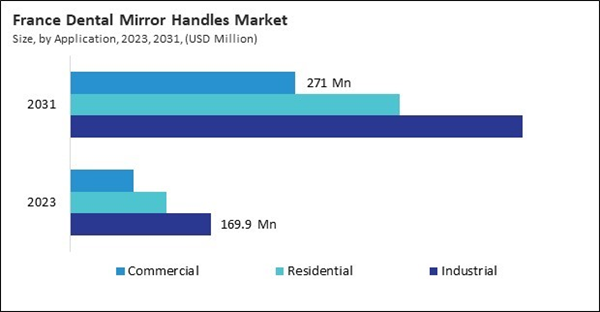The Germany market dominated the Europe Demand Response Management System Market by Country in 2023, and is expected to continue to be a dominant market till 2031; thereby, achieving a market value of $1.95 billion by 2031. The UK market is exhibiting a CAGR of 15% during 2024-2031. Additionally, the France market would witness a CAGR of 16.9% during 2024-2031.
Businesses are incentivized to reduce their energy load during peak times in commercial settings. For instance, factories can temporarily adjust production schedules or power down non-essential equipment, reducing energy costs and minimizing the strain on the electrical grid. Similarly, commercial buildings can use automated systems to manage lighting and HVAC based on real-time demand signals.
Utilities implement DRMS to manage load forecasts and demand fluctuations. By leveraging demand response strategies, utilities can maintain grid stability, reduce the need for peaker plants (often less efficient and more polluting), and incentivize consumers to participate in DR programs. This proactive approach allows for more balanced energy distribution and reduces operational costs.
With the EU’s European Urban Initiative dedicating funds to sustainable urban development, there is increasing financial support for smart city projects, including DRMS implementations. These initiatives encourage cities to adopt technologies that enhance energy efficiency and sustainability, positioning DRMS as a key solution for achieving these objectives.
For example, cities with advanced DRMS can better integrate renewable energy sources by aligning demand with periods of high renewable production, thus advancing Europe’s clean energy transition while maintaining grid reliability. In addition, the European Union’s focus on cohesive urban development is expected to create policy frameworks that further support the adoption of DRMS across Europe’s growing cities. Thus, the rising urbanisation in the region is driving the market's growth.
List of Key Companies Profiled
- ABB Group
- Honeywell International, Inc.
- Schneider Electric SE
- Siemens AG
- Eaton Corporation plc
- General Electric Company
- Johnson Controls International PLC
- Trilliant Holdings, Inc.
- Alstom SA
- Enel S.p.A
Market Report Segmentation
By Technology
- Automated
- Conventional
By Application
- Industrial
- Residential
- Commercial
By Country
- Germany
- UK
- France
- Russia
- Spain
- Italy
- Rest of Europe
Table of Contents
Companies Mentioned
- ABB Group
- Honeywell International, Inc.
- Schneider Electric SE
- Siemens AG
- Eaton Corporation plc
- General Electric Company
- Johnson Controls International PLC
- Trilliant Holdings, Inc.
- Alstom SA
- Enel S.p.A









